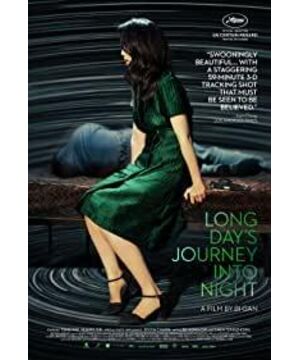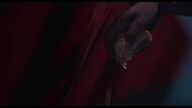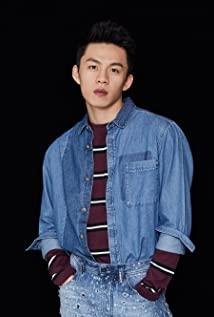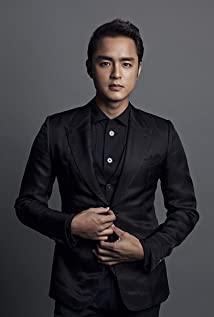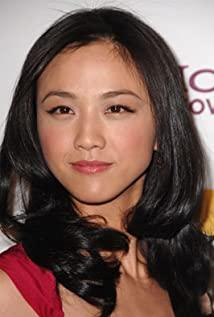Bi Gan's two films really have an ambiguous core, similarities and dissimilarities, reality, geography and memory, dreams, art forms and natural energy, which are freely counterpointed, nested or juxtaposed, allowing the audience to choose and feel The different aspects of it also bring many comments and expectations of desire dissatisfaction. This ambiguity (aesthetic awareness) is hidden from the outside, but it is a complete one, so it is eager to be deeply felt, but it is slowly receding.
Imagery has always been the word most often associated with people discussing Bi Gan's films, whether it comes from vision or poetry. Water droplets, clocks, mirrors, spinning light balls, rackets, and even barbershops, glasses, wild grapefruit. And he likes to quote, no matter the title, or a master familiar to fans, making him seem like a director who wraps his films with original poems and favorite images and artistic styles. But these are just an appearance of his poetic imagery style, like a combination of images in a verse (if his films are likened to poetry, the audiovisual elements are the "images" of the film). The important thing is not to speculate on the surface features of "images", but to explore the aesthetic thinking of constructing "verses". In this film, this kind of constructive thinking is prominently manifested in the state of two-dimensional and three-dimensional spatial structure, as well as the blank space and the nested structure of spread and extension of the typological minimalist strategy. The presentation and expression of oriental aesthetics brought by thinking. When you think about it carefully, the director's last work "Roadside Picnic" also contains similar aesthetic interests.
Scatter · Space
Different from the focal perspective of traditional western painting, the scatter perspective of Chinese painting spreads out the “points” in the depth space, and its line of sight is free to move. of beauty. And this kind of wandering of scattered points is manifested in the film as the constant dislocation and response of time and information elements, as well as the unique movement of characters in the extended time (long shot).
The monologues, textual information and visual elements of the dialogues in the film show point-to-point echoes. Soon after the opening, Luo Hongwu gave a monologue about the white cat's experience and the discovery of the gun. Later, the barber shop inadvertently mentioned that Zuo Hongyuan borrowed a gun from the white cat's father (the father sold the gun and explained the source of the white cat's gun), and The white cat calls his father an eagle, the eagle tattoo on his chest when he eats the apple, and the eagle pattern on the little white cat's racket, these scattered "dots" stitch the narrative into a logical clue, while outlining the outside of the painting. figure. There are many such counterpoints, and the seemingly unimportant information in the same scene is presented as an important echo of related elements in another scene, forming a kind of "decoding"-like movie viewing pleasure. "Roadside Picnic" is the same, but lacks information density and multi-point echo in structure. At the same time, the long-shot segment of "Earth" more clearly reflects the wandering of scatter perspective beyond the loop extension of the long-shot of "Roadside", which uses deep space and geographical barriers to create a chaotic texture. The landing action of the ropeway and flight constitutes the three spaces, while the moving lights in the mine, the opaque plastic canopy around the pool table, and the slow movement of the camera are full of freedom, creating a scene that gradually spreads out each point in sequence. The atmosphere of the image, the deep space has the rich extensibility of the plane at the same time.
The 3D image that cannot be ignored does emphasize the sense of three-dimensional space, but it complements the wandering of scattered points. This is a counterpoint between three-dimensional and two-dimensional, a fusion of close-range immersion and two-dimensional scatter narrative. Compared with the long shot of "Roadside Picnic", a low-definition and slightly exaggerated wide-angle lens was selected, which made the original documentary and deep picture produce a flat form and texture. The 3D image here has the reason for creation, not only the material to complete the dream structure The modeling also uses the uncertainty of the three-dimensional/planar space for reality and dreams to present the chaotic fusion of reality and memory space. Going a step further, the seemingly broken first half of the film also integrates two-dimensional and three-dimensional spatial layers, suggesting the counterpoint between the subjective inner picture and the precise and objective surround sound (and vice versa), or the two space-time states wrapped by the same shot . For example, in the scene of Luo Hongwu's dialogue with his stepmother, the blurred background and the sound behind him, Luo's subjective hearing under the water and the alignment of the objective picture above the water, as well as the two-time switching and viewpoint switching of the tunnel scene (this long shot It can also be compared to the long mirror in the fight in "Picnic", but the latter is only an objective perspective).
blank · non-nested
The improvement of "Earth" in narrative compared to "Picnic" is actually to present a richer film text with a typed shell and the resulting minimalist form. The blank space of images and plots contrasts with the spatial imagination of the narrative. For the two time-spaces in the first half of the intersection, each is so simple that only necessary clues are left, and at the same time, it echoes and fills in the other time-space (such as photos and clues in the Green Book). And one of the tunnel shots integrates the two time and space into one, and inserts the imaginary space created by the monologue. The back view of Wan Qiwen after the present time and space of Luo Hongwu's cart is the next scene foreshadowed by the just-ended off-screen memory sound. time and space. For the presentation of the narrative line in the past, only suggestive elements and images are retained according to the development program of film noir, such as the type symbol of the femme fatale, the assassination purpose brought out by the wild grapefruit, and Luo Hongwu falling in love with him (the two kissing) and the inevitability of killing her (with guns in the theater). At the same time, the white cats, Zuo Hongyuan, Lao A and other characters closely related to the incident included in the story are almost only outlined by monologues, and the relationship between them is free and enriched by hints. Although the white cat has only four shots, it highlights his structural presence behind the film (such as the unrelated apple-eating shot) and the emotional connection generated by the subsequent appearance of the little white cat.
The process of searching for Wan Qiwen was also led to Luo Hongwu's retrospect of his own experience because of a photo of his mother, and finally extended to his inner reflection in the second half of the long shot. With the appearance of the title, the film peels off the very formal story shell, spreads out horizontally and reconstructs the memory core contained in the previous video (Luo bids farewell to his dead friend/childhood self/his unborn son here) , met the lover, let go of the mother, made up for the lost love from the lover), so now the reality is no longer important. The structure of the dream is presented as smooth and concrete in 3D and long shots, while the reality part is broken and ambiguous, and the whole film presents a fusion of subjective inner and outer objective. Just like in our dreams, we can't actually tell the truth from the false.
"I always feel that my body is made of hydrogen gas, and my memory is made of stone." In the dark green and blue tones of a hand that picked up the microphone, the colorful light spots swaying on the wall disappeared with Luo Hongwu as the camera moved. The monologue of the dream, the sound of the broadcast transformed into reality and the cramped space of the small hotel bed, this is the first shot of the film, and it is also a condensed business card.
Written on January 7 (post-modified)
View more about Long Day's Journey Into Night reviews


